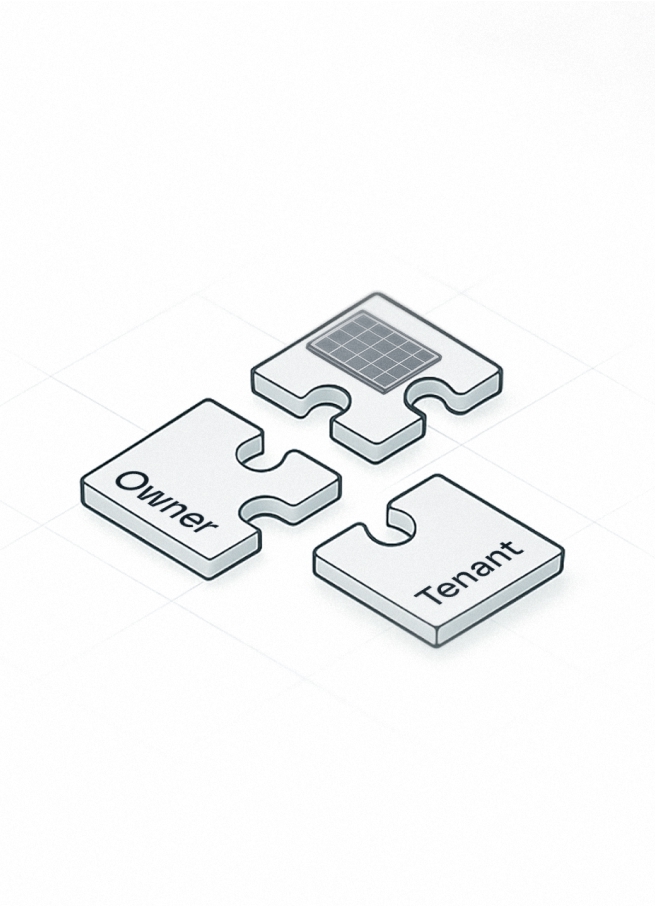What Does the Inflation Reduction Act Mean for Multifamily Solar?

Ivy Energy celebrates the Inflation Reduction Act (IRA), which has passed the U.S. Senate and House and was signed into law by President Biden on August 16, 2022. This act will be the largest climate investment in U.S. history. It will kickstart new incentive programs, investment in renewable energy, and initiatives that combat climate change. Ensuring that solar, storage, and the jobs that come with it are here to stay. Multifamily buildings will have new financing opportunities to deploy clean energy resources and provide benefits to tenants. However, considering the act is nearly 800 pages long, we’re breaking down the essential details for solar on multifamily and commercial real estate.
What Does the Inflation Reduction Act Mean for Multifamily and Commercial Solar Projects?
Solar Investment Tax Credit (ITC) Changes:
- For residential solar, the bill reverts back to a 30% ITC for all systems placed in service after December 31, 2021, through the end of 2032. Any customer who got permission to operate (PTO) in 2022 would be able to claim a 30% ITC instead of the 26% they previously expected.
- In 2033, it drops to 26%.
- In 2034, it drops to 22%.
- For commercial solar larger than 1 MW, projects would need to pay prevailing wage and have 10%-15% of labor hours filled by apprentices to qualify for the 30% ITC. Otherwise, the credit is 6%. This is only available for projects beginning construction 60 days after the Department of Treasury outlines the labor metrics.
- Projects smaller than 1 MW qualify for 30% without any workforce requirements.
- This applies through the end of 2025, at which point the Treasury Department will analyze the greenhouse gas emission goals and decide on the continuation of the commercial solar and storage ITC for the following seven years. Their goal is to maintain the credits until emissions from the electric sector drop 75% below 2022 levels.
- Eligibility for the commercial ITC changes in 2025 from a list of technologies to any generation technology with carbon emissions at or below zero, but solar qualifies in either framework.
- An additional 10% is available for using domestic content. This requires all steel and iron to be sourced from the U.S. and 40-55% of the value of manufactured products to be from the U.S.
- There is a direct pay provision to receive cash rather than a tax credit, but only for a non-profit or a state, local, or tribal government, and not for projects installed in 2022. Projects larger than 1 MW must meet workforce requirements to qualify for direct pay. Low-income residential customers with no tax appetite do not qualify for direct pay. However, credits are transferable to a third party in a cash transaction, so customers without tax appetite that do not qualify for direct pay can sell the credits.
- Tax credits not used in the first year can be carried forward to future years.
ITC Eligibility:
- Standalone battery systems are eligible for the ITC, in addition to batteries paired with solar whether they are powered by PV or not. Residential systems must be on a “dwelling unit” used as a residence by the taxpayer and be at least 3 kWh. Commercial systems must be at least 5 kWh.
- Microgrid controllers are also eligible for the ITC, as are interconnection facilities for projects under 5 MW.
- Solar water heating eligibility remains, but commercial pools were not added.
Renewable Electricity Production Tax Credit (PTC):
- The PTC is available for solar with no size limit as an alternative to the ITC, at a rate of 2.5 cents/kWh if the workforce requirements are met and 0.5 cents/kWh if they are not.
- If a system is installed on a brownfield or in an area with significant fossil fuel employment, the ITC increases by 10%, or the PTC increases by 10%.
New Credits and Grants:
- There is a new manufacturing credit of 7 cents/watt for module assembly. Separate credits are available for module components, batteries, and inverters.
- $2.8 billion in block grants for low-emission technologies, workforce development, and climate adaptation and resilience.
- The IRA increases the Department of Energy’s Loan Program Office’s loan authority for these programs, appropriates additional funds for credit subsidies, and establishes a new LPO program focused on the reutilization of energy infrastructure
The Next Step in Mass Adoption of Solar
Not only does the Inflation Reduction Act extend tax credits and grants making renewable energy more affordable, but it also develops the solar workforce, expands options for funding, and incentivizes more real estate owners to invest in solar. We are thrilled to see these changes and the long-term impact they will have on the mass adoption of solar for all properties. Our team at Ivy is well-versed in how these changes apply to multifamily solar and multi-tenant commercial solar projects. So, if you’re unsure of what your current or future project will qualify for, please reach out to us. We can provide guidance, as well as a revenue estimate for your property.





